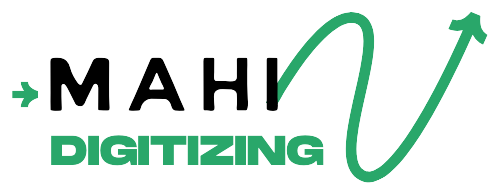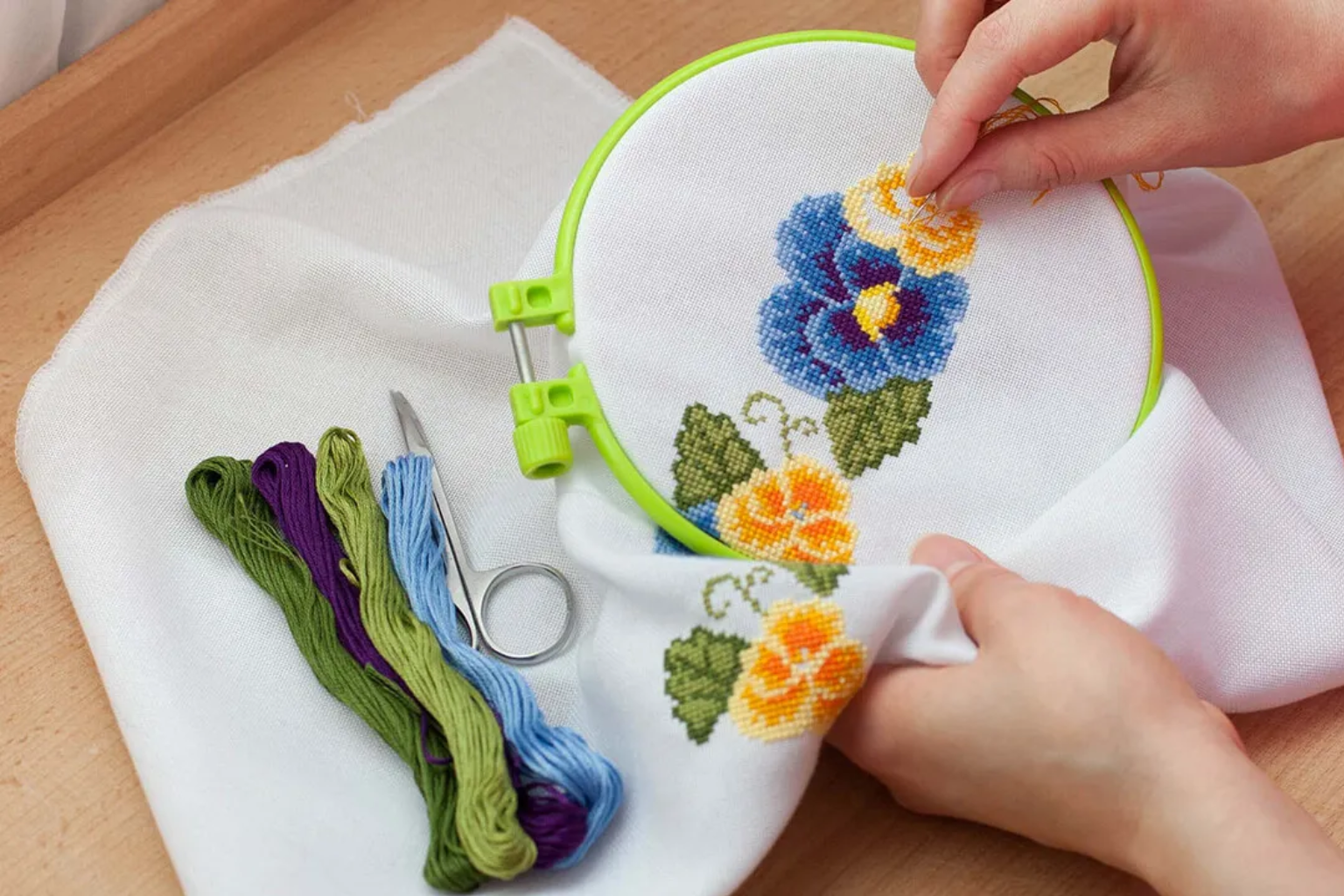Felt applique has long been a favorite in embroidery due to its rich texture, versatility, and timeless charm. As fashion and embroidery digitizing continue to evolve, this traditional technique is being reimagined with modern technology, sustainable materials, and innovative design approaches. In this guide, we’ll explore how felt applique is shaping the future of custom fashion and why digitizing plays such a crucial role in bringing designs to life.
The Evolution of Felt Applique
Felt applique dates back centuries, originally used as a decorative element in garments, banners, and home décor. Its enduring popularity stems from the fact that felt is durable, easy to work with, and capable of producing bold, clean shapes.
Over time, the technique has adapted to suit the demands of modern fashion. Today’s designers use applique not only for embellishment but also as a storytelling tool, adding depth and dimension to apparel.
Digitizing has modernized the applique process by converting artwork into precise stitch files that guide embroidery machines. This eliminates guesswork and ensures accuracy in every stitch.
Felt remains a preferred choice for applique because of its non-fraying nature, which allows for clean-cut shapes and reduces production challenges. Unlike woven fabrics, felt maintains its form even after multiple wash cycles.
In the past, applique was seen as labor-intensive, but technology has transformed it into a scalable and efficient method for producing high-quality designs.
Fashion houses now incorporate applique into everything from couture gowns to streetwear, making it a versatile technique for brands at every level.
Custom fashion designers also embrace applique to create personalized designs that resonate with clients seeking unique apparel.
At Mahi Digitizing, we specialize in optimizing applique designs for embroidery machines, ensuring precision and durability for every project.
Why Felt Remains a Top Choice
Felt stands out among applique fabrics because of its ability to hold bold shapes without fraying. This makes it an excellent choice for lettering, logos, and intricate motifs in embroidery projects.
Its texture adds dimension and character to designs, which is especially valuable in fashion applications where detail is key. Designers can layer felt with other fabrics for a mixed-media effect that elevates the garment.
Felt is also available in a wide range of colors, offering endless possibilities for creativity. Unlike other fabrics, it doesn’t require heavy finishing, which simplifies the production process.
From a cost perspective, felt is affordable while still delivering a premium look, making it popular in both small-batch and mass-production projects.
The fabric’s sturdiness ensures that patches and appliques last longer, even when subjected to frequent use and washing.
Felt is lightweight, comfortable, and easy to embroider on, making it suitable for everything from casual wear to high-fashion pieces.
It also pairs well with advanced embroidery techniques like 3D puff and mixed embroidery styles, adding versatility to its appeal.
When digitized properly through professional embroidery digitizing, felt applique can achieve a flawless balance of durability and beauty.
The Role of Embroidery Digitizing in Felt Applique
Embroidery digitizing is the bridge between design and production. For felt applique, digitizing ensures that every cut and stitch aligns perfectly for a professional finish.
The digitizer defines the applique placement line, tack-down stitches, and finishing stitches, which control how the felt adheres to the base fabric.
Proper underlay stitches stabilize the design and prevent shifting during embroidery. This step is essential when working with thicker fabrics like felt.
Digitizing also allows designers to experiment with stitch types, such as satin or zigzag borders, that enhance both durability and appearance.
When done incorrectly, applique digitizing can lead to misaligned edges, fraying, or bulky stitches that compromise the design.
Professional digitizers anticipate these challenges and adjust settings like density, pull compensation, and stitch angles to achieve clean results.
Advanced software has made it possible to simulate applique designs before production, reducing errors and wasted materials.
By working with experts at Mahi Digitizing, fashion brands and embroidery shops can ensure that every applique piece is production-ready and machine-compatible.
Trends Shaping the Future of Felt Applique
The future of felt applique is being shaped by sustainability trends. Many brands are now opting for eco-friendly felt made from recycled fibers to align with green initiatives.
Minimalist fashion continues to influence applique design, with clean lines and simple shapes dominating collections. Felt’s bold texture makes it perfect for these understated designs.
Streetwear brands are also experimenting with oversized felt appliques, turning logos and lettering into statement pieces that capture attention.
Technology is driving innovation, with laser cutting and precision digitizing enabling more detailed applique designs than ever before.
3D applique, which combines felt with foam or layered stitching, is gaining traction as designers look for ways to add depth and tactile interest to garments.
Personalization is another trend, as customers increasingly seek custom-made designs that reflect individuality. Felt applique offers endless options for personalization at an affordable cost.
Collaborations between embroidery houses and fashion designers are pushing applique into new creative territories, blending traditional techniques with contemporary aesthetics.
As consumer demand for originality grows, felt applique will remain a versatile and fashionable choice in embroidery digitizing.
Applications in Custom Fashion
Felt applique is widely used in custom fashion because it allows designers to create standout pieces without relying on complex fabrics or heavy embellishments.
In streetwear, large felt logos on hoodies, jackets, and caps add a bold statement that resonates with younger audiences.
High-fashion designers use applique to introduce texture and layering effects that elevate garments to luxury status.
Applique is also popular in children’s fashion, where playful shapes and bright colors are used to make designs fun and engaging.
Corporate apparel often incorporates felt applique for durable branding, ensuring logos stay intact through repeated wear.
In accessories, felt applique adds style to bags, shoes, and hats, making them unique and visually appealing.
Custom sportswear teams also prefer applique patches for durability and visibility, ensuring team branding stands out during events.
Explore more about how applique enhances garments in our guide on traditional applique embroidery.
Sustainability and Innovation in Felt Applique
Sustainability is at the heart of the future of applique. Felt made from recycled materials reduces waste and supports eco-conscious fashion initiatives.
Digitizing technology minimizes errors and waste by allowing for accurate simulations before production begins, which saves both fabric and thread.
Laser cutting techniques enhance precision while reducing manual labor, ensuring consistent results with less material loss.
Water-based dyes and non-toxic finishes are becoming more common in felt production, aligning with eco-friendly manufacturing standards.
Designers are experimenting with biodegradable felt fabrics, which naturally decompose and minimize environmental impact.
Digital fashion and augmented reality are beginning to influence applique design by allowing designers to test virtual prototypes before physical production.
Innovative blending of felt with sustainable fabrics like organic cotton and hemp is creating hybrid textiles ideal for applique.
These advancements demonstrate that applique will not only remain relevant but also become a key player in sustainable fashion.
Why Work with Professional Digitizers?
Professional digitizers ensure that felt applique designs are machine-compatible, visually sharp, and long-lasting. Their expertise helps avoid costly mistakes during production.
They also understand how to adapt designs for different embroidery machines, saving time and resources for fashion brands.
Working with professionals reduces trial-and-error, allowing designers to move from concept to production more efficiently.
Expert digitizers can advise on fabric choices, stitch types, and finishing techniques that maximize durability and style.
They optimize stitch paths to minimize thread breaks and machine downtime, which is especially important for large-scale production runs.
Professional digitizing ensures consistent results across batches, maintaining quality even in mass production.
At Mahi Digitizing, our team combines years of experience with advanced software to deliver applique designs that exceed expectations.
By partnering with experts, fashion designers can focus on creativity while ensuring flawless execution of their applique projects.
Final Thoughts
The future of felt applique is bright, blending traditional craftsmanship with modern innovation. Its versatility ensures it will remain a staple in both fashion and embroidery digitizing.
From eco-friendly fabrics to 3D layering techniques, felt applique is evolving to meet the demands of sustainable and contemporary fashion trends.
Digitizing plays a central role in this transformation, turning creative ideas into production-ready stitch files that deliver consistent results.
Fashion designers and businesses can leverage applique to create standout pieces that are both affordable and durable.
Custom fashion will continue to embrace applique as a way to personalize garments and connect with audiences seeking unique designs.
Innovations in digitizing, materials, and technology will expand the creative possibilities for applique in the coming years.
By working with professional digitizing teams, designers can stay ahead of trends and produce high-quality applique pieces that align with modern fashion needs.
If you’re ready to bring your applique designs to life, request a quote today and experience the difference that expert digitizing can make.

